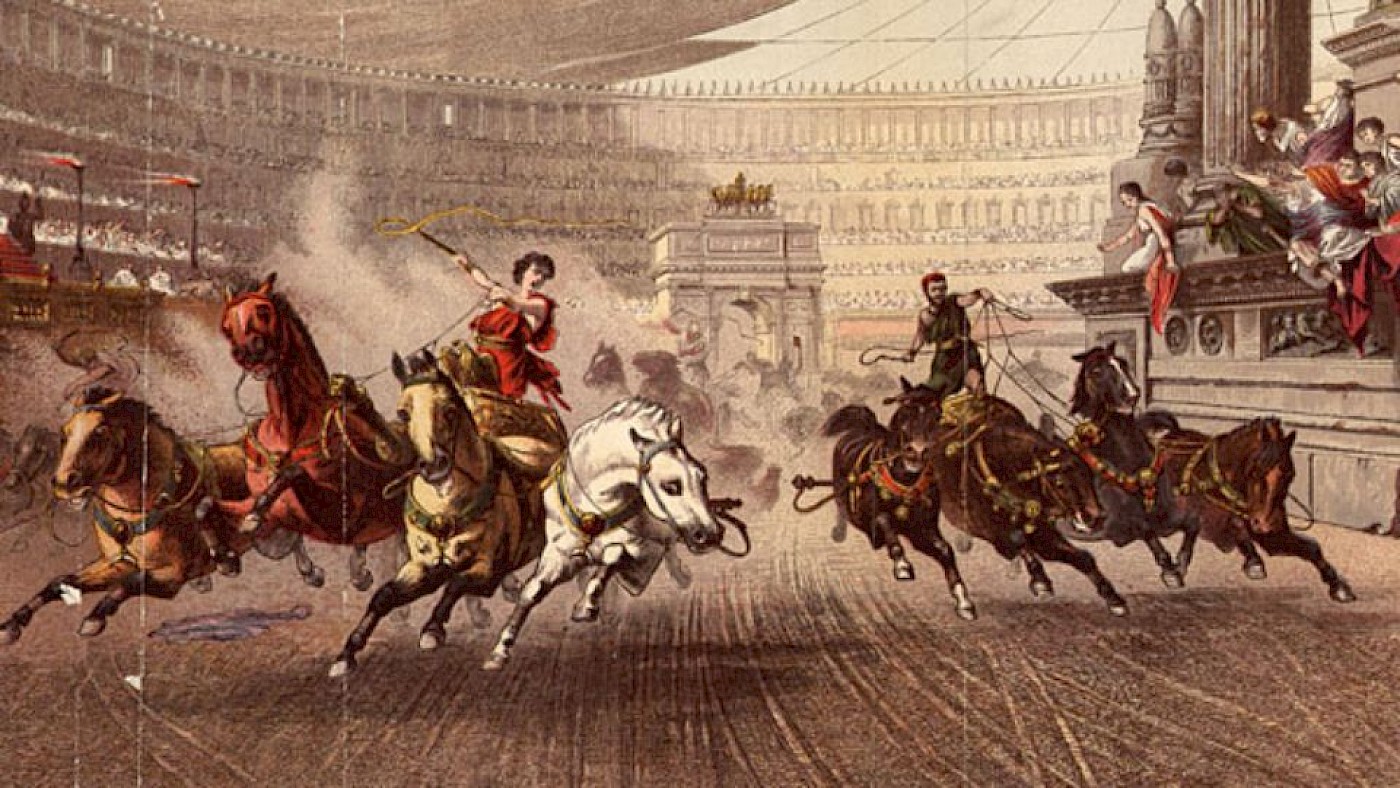It is no secret that racing, of many different types, is popular throughout the world today, and indeed throughout world history. For those of us living in the modern world, we have the grand spectacles of NASCAR, Indy Car, and perhaps at the top, Formula 1.
In the ancient world, the racing scene was no less complex. In large communal games, such as the Olympic Games or the Isthmian Games, many different types of these events occurred. Simple competitions between men on foot may be familiar to us, being held over rather short distances. The most spectacular of the foot races, though, was the hoplitodromos, which required runners to wear a helmet and greaves, rather than to compete in the nude. Most prestigious in the Greek world, however, was the stadion, a race of around 190m in the nude.
The most spectacular, and enduring, type of racing in the ancient world, though, was horse racing. This took many forms. Its most basic was one man on one horse. Racing of this type was widespread in the ancient world, though not the most enduring. It was dropped from the Olympics early on in favour of the more prestigious chariot races. Single horse racing seemed to have been fairly popular in Etruria during the so-called Orientalizing and Archaic periods, attested most wonderfully by a number of spectacular terracotta friezes.
Chariot racing, though, had a wider appeal and eventually became the most prominent spectator sport in the ancient world. For the Greeks, the four-horse chariot (therippon) was the pinnacle of equestrian competition. It was a part of many of the pancultural games and attracted participants from around the Mediterranean. The Deinomenid dynasty of Syracuse was well known for its interest in the four-horse chariot race, with Hiero’s team winning at Delphi in 470 BC, and being commemorated by Pindar’s first Pythian Ode. The professionalism of the sport, however, did not really flourish until the blossoming of Rome.
By the first centuries AD, Roman chariot racing had become something equivalent to our modern sports leagues. Teams, or “factions”, arose around different groups of racers, and hooliganism (as we would call it) was rampant. Hidden beneath the sweeping discussions of the circus (race course), the factions, and the social impact of the sport were the racers themselves. We see something of them in our evidence, but not nearly as much as one might suspect, with today’s oversaturation of “news” articles on the daily activities, and statistics, or sports personalities. We do, however, know an amazing amount of detail of a number of chariot drivers.
One of these men is known to us simply as Crescens. He was originally from Mauritania and drove for the “blue faction”. In his twenty-fourth race he achieved a first place finish in a four-horse chariot (called by the Romans a quadriga). In his career he raced 686 times, winning 47 of them, coming in second in 130, and third place 111. For all of his success on the circus, he won 1,558,346 sesterces (perhaps as much as $4.6 million today in gold value, though buying power is almost impossible to calculate). This was a small fortune in the Rome of the second century AD, when Crescens was racing. His success is evidence that you did not have to come from the landed aristocratic class to be well off. Indeed, he came from Mauritania, and probably not from a family of means.
In the manner of many modern sports personalities, Crescens achieved his success at a young age. He was 22 when he died, which means all of his winnings must have come before that point. His career is a fairly unique one because we know so many details. This is thanks to the preservation of his tombstone, currently held in the Capitoline Museum, in Rome (NCE 106 = Via della Pace n. 40, 1878).
In this well known, yet still disappointingly obscure, figure from ancient Rome I was reminded of Sebastian Vettel, the young Formula 1 driver who achieved greatness at 23 by winning his first championship. The spirit of Crescens, and others like him, as well as the countless fans who cheered them on, are alive and well in the hearts of modern racers and supporters alike. The means of the races have changed, but their allure has not diminished.
